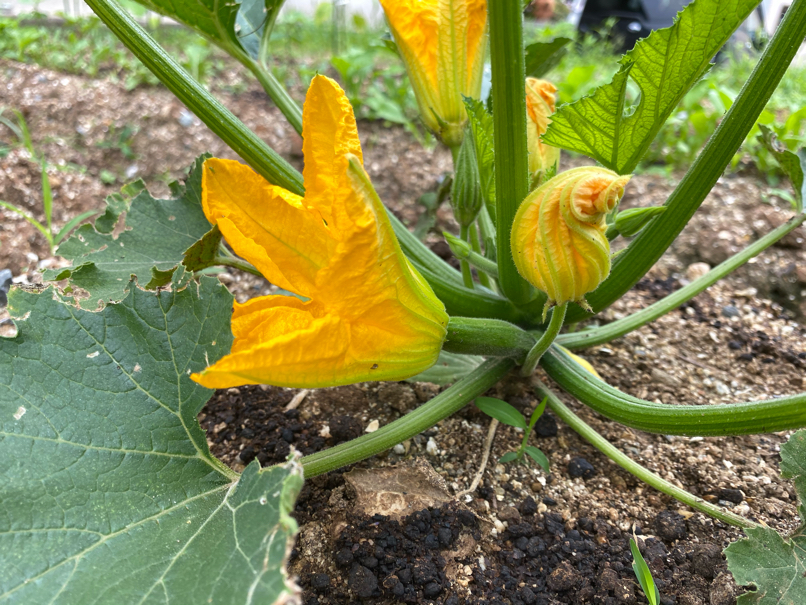
Zucchini, unlike parthenocarpic cucumbers, requires pollination.
Tomatoes and eggplants have both stamens and pistils in their flowers and self-pollinate, so they bear fruit without any intervention. Cucumbers can grow large fruits without pollination due to their parthenocarpic nature, differing from tomatoes and eggplants.
Zucchini, however, has separate male and female flowers, and their blooming times often do not coincide, making pollination challenging. Since zucchinis can grow large, many home gardeners only plant one or two. Relying on natural pollination might not be effective in such cases.
Therefore, it’s better to perform hand pollination for zucchinis. In this guide, we’ll introduce an easy method for pollinating zucchinis.
Will Planted Seeds Germinate? How to Grow Watermelons from Seeds

- How to Distinguish Between Male and Female Zucchini Flowers
- Pick a blooming male flower of zucchini and remove the petals
- Rub the stamen of the Zucchini against the pistil to perform hand pollination
- Two days after pollination: the zucchini fruit is already growing significantly in size
- Let’s artificially pollinate zucchinis
How to Distinguish Between Male and Female Zucchini Flowers

I apologize for using the same photo as the introduction, but this picture will help us distinguish between male and female zucchini flowers.
Identifying male and female zucchini flowers is simple:
- The female flower has a swollen base
- The male flower does not have a swollen base
In the photo above, the flower on the left is a female flower. You can easily identify it by the small zucchini-like structure at the base of the flower.
The bud on the right is a male flower. Its base is straight and only connects to the stem.
Now, you should have no trouble distinguishing between male and female zucchini flowers.
Pick a blooming male flower of zucchini and remove the petals
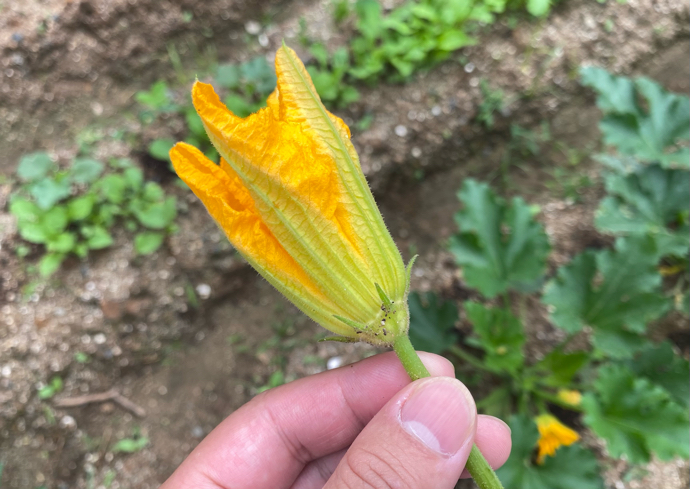
First, pick a blooming male flower. Zucchini flowers come off easily, so snap it off from the base. Next, remove the petals to expose the stamen.
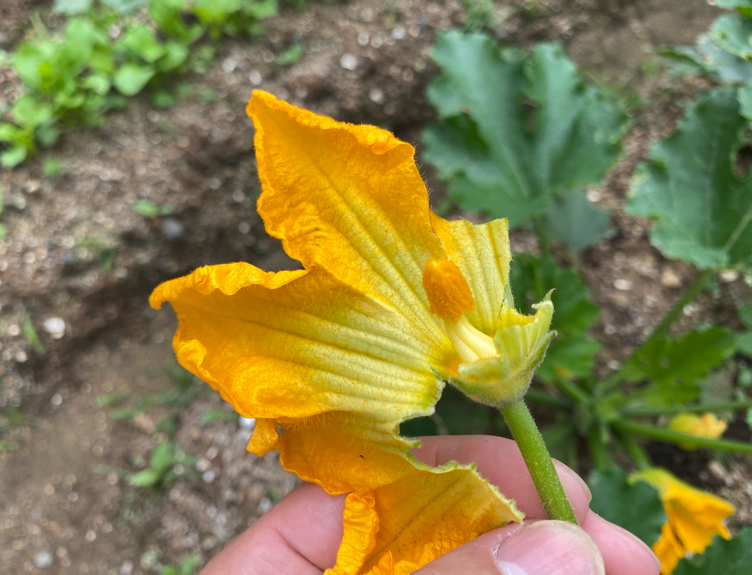
Just like this.
You can see that the stamen is covered with plenty of pollen.
Previously, when I looked inside a fallen flower, I found cucumber beetles. Do they eat the pollen as well?
Rub the stamen of the Zucchini against the pistil to perform hand pollination
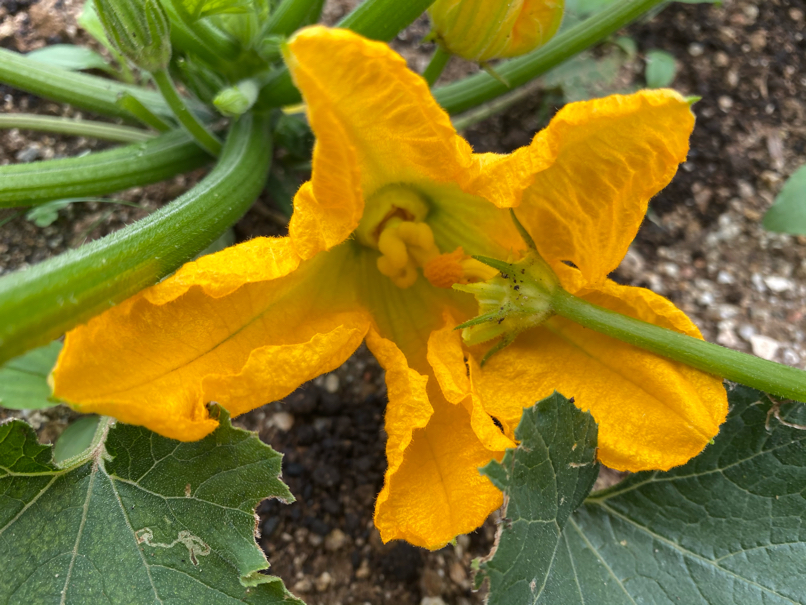
At this point, all that’s left is to transfer the pollen from the stamen to the pistil of the Zucchini.
Rub the exposed stamen against the pistil to ensure the pollen sticks. There’s usually enough pollen for multiple flowers, so you can continue to pollinate any other blooming female flowers.
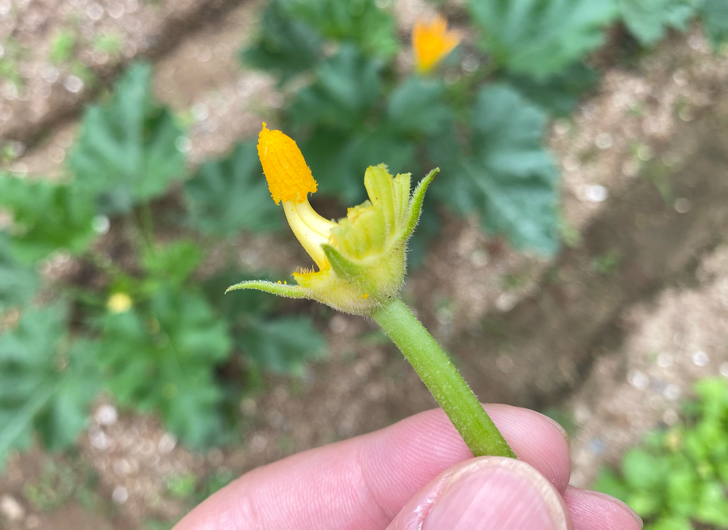
Here is the stamen of the zucchini after pollination. The pollen on the tip has been completely transferred to the pistil, leaving it bare.
This time, I performed artificial pollination on two female flowers. It seems like there are fewer female flowers compared to male flowers. Is this normal?
Two days after pollination: the zucchini fruit is already growing significantly in size
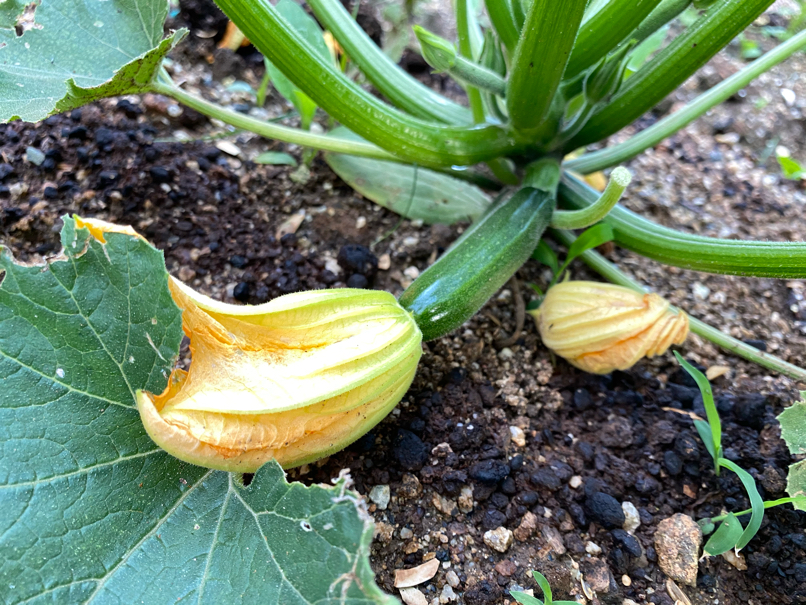
The zucchini female flowers introduced earlier seem to have been successfully pollinated and are growing steadily.
Zucchinis are typically harvested around 5 to 7 days after flowering, so it looks like they’ll continue to grow rapidly.
It’s exciting to think that in just a few more days, we’ll be able to harvest and enjoy them. The speed from flowering to harvest is quite gratifying.
Let’s artificially pollinate zucchinis
This time, I introduced the method of artificial pollination for zucchinis.
Identifying zucchini male and female flowers is easy, and once you’ve learned the method of artificial pollination, you can perform it without fail.
Zucchinis bloom early in the morning, so you can quickly pollinate them before heading to work, if you have a home garden.
If you have only a few plants, artificial pollination is essential, so please remember the method.
Is it difficult to grow tomatoes from seeds? Methods for germinating tomatoes from seeds

【For Beginners】How to Bell Peppers from Seeds

How to Harvest Seeds from Homegrown Okra for Next Year



コメント